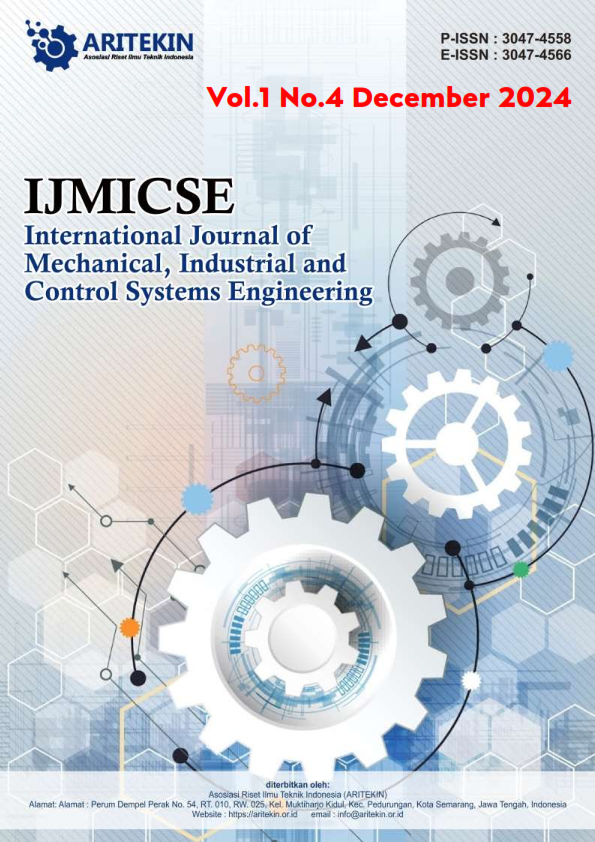Collar Manufacturing Process With Turret Machine
DOI:
https://doi.org/10.61132/ijmicse.v1i4.128Keywords:
Machine flush, Collar, Spare partAbstract
The turret machine is one type of lathe that has The main characteristic is that the tool for sequential operations can be set in readiness for use in the appropriate sequence. This turret machine is intended for cutting, drilling and smoothing work pieces. The process of making this collar aims to find out what material is used and the function of the collar. In the process, the iron is clamped with a chuck then the drill which is located on the loose head is brought close to the workpiece then the chuck rotates so that the workpiece has a hole with an inner diameter of 11.2 mm, after that the workpiece is sprayed with bromus liquid to ensure that the workpiece does not rust easily and does not experience excessive heat which can damage the workpiece. Entering the next stage, the workpiece is cut to a length of 9 mm, and the next process is that the workpiece is placed in a jumper. The cumper process functions to smooth the workpiece so that it is not rough before entering quality control. After that, the object enters quality control. In quality control, the work object is measured using a jig measuring tool to determine whether the work object is OK or NG. The aim of this process is to make quality spare parts that are safe to use. The disadvantage of the turret machine is that it is a manual process that requires hand speed and expertise in operating the turret machine..
References
Gunawan, R. (2017). Pembuatan chuck pada mesin bubut turret. Laporan Tugas Akhir, Politeknik Negeri Bandung. Diakses dari https://digilib.polban.ac.id/files/disk1/155/jbptppolban-gdl-rizalgunaw-7706-1-kelengka-6.pdf
Kumar, S., & Hassan, S. (2016). Design and fabrication of special purpose tool fixture for CNC turrets. International Journal of Mechanical and Mechatronics Engineering (IJMME), 10(6). Diakses dari https://www.researchgate.net
Scholz, A., & Wernicke, S. (2021). Incremental collar forming process for the manufacturing of branched tubes and pipes. Advances in Manufacturing Technology XXIV, Springer, 301–309. Diakses dari https://link.springer.com
Sunyoto, S., Nugroho, G., Subarjan, S., & Sasmito, A. (2020). Optimalisasi fungsi mesin bubut untuk proses pengelasan rotary friction welding dengan menambah jig dan pendorong hidrolik. Indonesian Journal of Laboratory, 2(3), 17–26. Diakses dari https://jurnal.ugm.ac.id/ijl/article/download/57064/28490
Sutopo, W., & Kurniawan, R. (2018). Optimasi desain struktur bed mesin bubut CNC terhadap pengaruh getaran pada proses pemesinan. Jurnal SIMETRIS, 9(1), 15–22. Diakses dari https://jurnal.umk.ac.id/index.php/simet/article/viewFile/486/520
Wimmer, S., & Brueckner, J. (2016). Joint mechanisms of the collar-connection-element. International Journal of Materials and Manufacturing Methods (IJMMM), 6(2), 120–126. Diakses dari https://ijmmm.org
Downloads
Published
How to Cite
Issue
Section
License
Copyright (c) 2024 International Journal of Mechanical, Industrial and Control Systems Engineering

This work is licensed under a Creative Commons Attribution-ShareAlike 4.0 International License.





